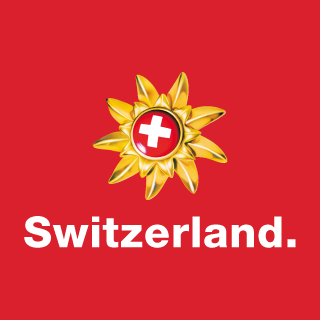Federal Constitution and the 19th century
With the Federal Constitution of 1848 and 1874, the Confederation changed from a confederation of cantons to a federal state. In the course of the 19th century a system of political parties was gradually established.
The 19th century in Europe was marked by confrontation between the liberal - democratic forces and the conservative supporters of the medieval social order. In Switzerland, after the conservatives instigated the Sonderbund War, the democratic principle was finally enforced by the Federal Constitution of 1848. However differences remained while the country was going through its first practical experience with this new form of government. Interestingly, the resistance of the conservatives against the concentration of social (political and economic) power in the hands of the liberals led to the typical Swiss refinements of the democratic system ("Direct Democracy") and thus to the internal stability of the new democratic order. The high officials of the Catholic Church (Pope and bishops) were desperately trying to turn back the course of history, but their involvement in politics, both in Switzerland and in Germany (which was still a monarchy) only served to strengthen the progressive forces.
The new constitution was drafted at the beginning of 1848, subsequently approved by the Diet and shortly thereafter passed by the 22 cantons. It gave the Confederation a more centralised government, which took over many of the rights and duties which formerly belonged to the cantons.
The country was now opened up to economic development by the elimination of barriers that had previously hampered the movement of people, goods and money.
The most important innovation was the creation of a bicameral system (Federal Assembly and Federal Council, whose seats were filled by democratic elections in which only men were allowed to participate until 1971) and of the Federal Council (consisting of seven members with equal rights; the office of the Federal President was filled on a rotating basis every year by one of the other Federal Councillors).
The new Constitution also gave citizens a number of rights and freedoms, including freedom of the press, freedom of religion and the free choice of place of residence.
The new Federal Assembly met for the first time on 6 November 1848 with liberals in the overwhelming majority. Parliament first elected the government (seven liberal men), with Jonas Furrer being appointed the first President, and designated Bern as the Federal Capital.
In the next few years the Assembly passed a series of laws centralising and unifying the administration. The Federation took over responsibility for the postal service; it unified the currency and the system of weights and measures. It also abolished the internal toll system, which had acted as a serious brake to trade between cantons.
Foreign policy after 1848
The establishment of the federal state coincided with a wave of revolution throughout much of Europe, but by 1850 the old conservative regimes in the neighbouring countries had regained power. Relations with Austria were particularly tense in the early 1850s.Italians fighting for independence from Austrian rule used Ticino as a place of refuge, where they found general sympathy among the local population. The Austrians frequently violated Swiss territory in pursuit of these fighters, despite protests from Bern.
The neutrality principle, to which Switzerland has subscribed since the Peace of Westphalia, established the basis for the country’s humanitarian commitment. In 1863, the International Committee of the Red Cross (ICRC) under the direction of the Swiss Henry Dunant was founded. Although the ICRC was created by private initiative, the organisation soon succeeded in convincing the Swiss and other governments of the value of its work. In 1864, the first Geneva Convention for the protection of injured soldiers was adopted at an international conference. To date, there are four Geneva Conventions.
During the Franco-Prussian War (1870-1871), when Strasbourg was under constant attack, a delegation of the ICRC was able to get the consent of the Prussian rulers to take many old people, women and children out of the city. In the beginning of 1871, the French Eastern Army< /b> under General Bourbaki was surrounded by German troops near the Swiss border. To avoid unnecessary bloodshed and the taking of prisoners of war, Bourbaki’s representative negotiated the internment of the Eastern Army with Switzerland: The French were housed in camps in Switzerland and they surrendered their weapons and equipment at the border (the event is portrayed on the Bourbaki Panorama in Lucerne on a 110-metre-long circular painting).
Political developments after 1848
The Swiss political party system gradually took shape in the 19th century.After the fall of Napoleon, there was a relatively clear division, with the conservatives and aristocrats on the one hand and progressives on the other. The conservatives wanted to return to the system as it was before 1798 with many privileges for a small class of citizens, while the progressives (also known as “free thinkers”) fought for equal rights for all.
The conservatives wanted to keep as much power with the cantons as possible and the progressives advocated a federal state. But even before 1848, there was disagreement among free thinkers about the best way to secure more rights and more freedom for all.
Finally, the progressives divided into three groupings:
The liberals were represented by industrialists who believed in free enterprise without government intervention . The radicals were somewhat more socially oriented and argued that the state should play a role in the economy.
The democrats, who emerged in 1860, favoured "pure democracy”. They believed the electorate as a whole should be the body which took political decisions, rather than their elected representatives. However, it was only in 1890 that the three factions split officially. The radicals formed their own party in 1894, the Free Democratic Party (FDP). The FDP is one of the parties with seats (with two Federal Councillors) in the Swiss government today.
The workers themselves were poorly organised and their concerns were largely ignored. Protests were put down and severely punished. However, self-help groups started appearing in the 1830s under the influence of political refugees from Germany. The Social Democratic Party, which represented the working class, was founded in 1888.
Despite their defeat in the Sonderbund War, Catholic conservatives did not disappear from political life. Although they were weak at national level, they enjoyed considerable support in the Catholic cantons. Until 1912 their party was known as the Catholic Conservative Party.
In the Swiss context, conservatism meant defending local structures and culture against the might of the liberal-radical centre. The religious and political boundaries were not identical. Not all Catholics were conservative, and not all conservatives were Catholic.
After many years in opposition, the Catholic conservatives succeeded in getting a member into the Federal Council in 1891 (the first Catholic conservative Federal Councillor was Joseph Zemp).
Economic and social development
In economic and social terms, the second half of the 19th century was marked by the industrialisation of the Swiss Mittelland and a sharp increase in the population.Switzerland moves from being an agrarian to an industrial state. Up to the First World War, the textile industry was the leading industry in eastern Switzerland. Subsequently, the machine industry and, particularly in Basel, the chemical industry developed. After the advent of the electrical industry Europe’s first large river power plant was created between Rheinfelden AG and Rheinfelden (Baden) and this was soon followed by numerous smaller and larger hydroelectric power plants to generate electricity for the textile and aluminium industries, and later for private households and the railways.
In agriculture, the cultivation of grain was abandoned in favour of milk and livestock due to cheaper imports. Cheese, chocolate and condensed milk became important export goods. Despite the industrial boom many Swiss were forced to emigrate to North and South America and Russia because of the poor economic conditions. The exodus caused a strong growth in the cities with the percentage of urban population in relation to the total population increasing from 6.4 to 27.6 percent between1850 and 1920.
Trade and tourism
In the first half of the 19th century, the roads were greatly improved. Many mountain passes could now be crossed on wheels, which boosted transalpine trade.However, the railways comprised the largest share in the economic development. The first railway line in Switzerland was opened in 1847. Between 1854 and 1864, the rail network – which was operated by a private company – grew from 38 to 1,300 km.
Despite the important role to be played by the railways, many private companies got into financial difficulties. Hence the state bought up most of the companies and in 1902 founded the Swiss Federal Railways SBB.
The growth of the railways went hand in hand with the development of tourism. Although foreign trips remained beyond the means of most people, prosperous members of the middle class could and did travel abroad.
By the end of the 19th century, some 350,000 foreign tourists - predominantly British – were visiting Switzerland each year. The development of the summer and winter sports resorts was also due to their initiative.
The new Constitution of 1874
In certain cantons – Zurich in particular – the introduction of greater direct democracy was a great success. Hence, this soon led to attempts to introduce similar changes at a national level.Liberal business circles also wanted a revision of the constitution as they favoured a more centralised legislation governing economic activity .
The revised Federal Constitution was adopted in 1874. It gave the Swiss population direct democratic instruments (right of initiative and referendum) which make it possible to change or revoke virtually every decision made by the Federal Council and Parliament.

